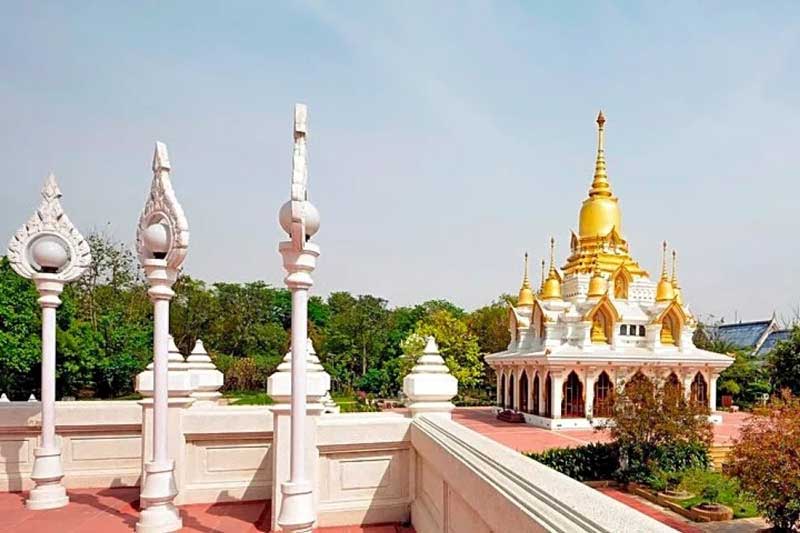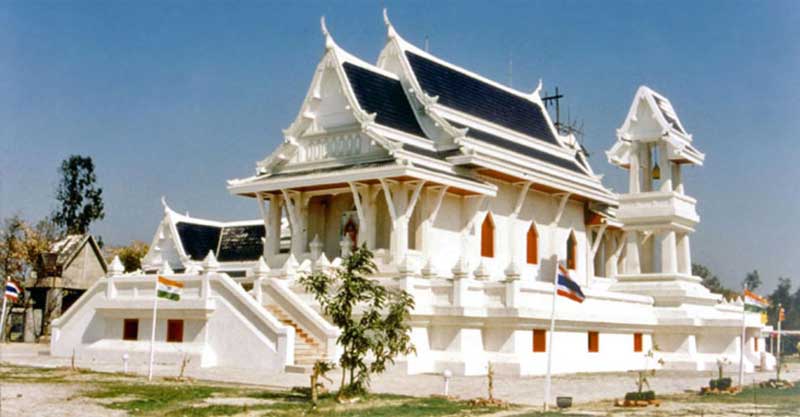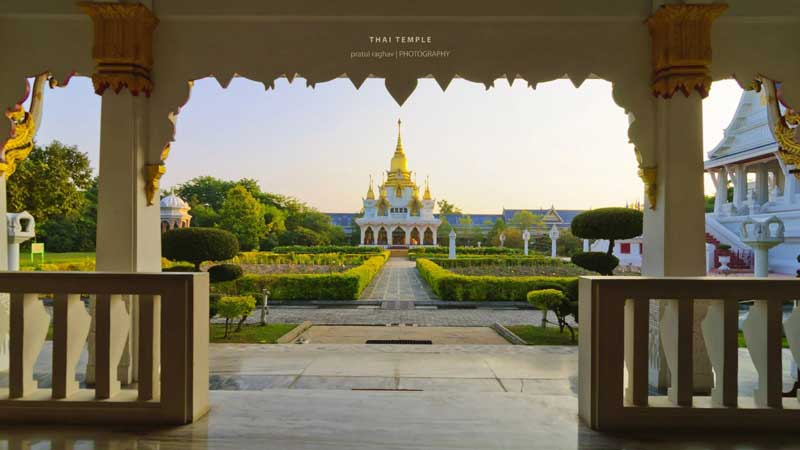
Located about 50 km east of Gorakhpur in Uttar Pradesh, and believed to be the place where Gautama Buddha attained Mahaparinirvana, Kushinagar contains several ancient Chaityas, Stupas and Biharas or Buddhist temples, and is considered one of the holiest places for the Buddhists. Apart from the main Mahanirvana Stupa and the circular Ramabhar Stupa, believed to be one of the eight Stupas built on the ashes of Buddha, along with the present Mahaparinirvana Temple, built by the Indian Government in 1956, and many more, Kushinagar also contains the beautiful Wat Thai Temple, with its huge complex, built in a typical Thai-Buddhist architectural style, which is considered a cultural gem that displays the colourful traditions of Thailand.
Located near the Mahaparinirvana Stupa, it is one of the most beautiful monasteries in the country, a symbol of the cultural change and cohesion among India and Thailand, and one of the most-visited tourist spots in Kushinagar.

The Thai word Wat is originated from the Sanskrit word Vata, which means enclosure. Nestled amid lush greenery and sprawling over an area of 10 acres, the Wat Thai Kushinara Chalermaraj Temple, popularly known as the Wat Thai temple, or simply as the Thai temple, is in fact a huge temple complex, built by the disciples of the Buddha from Thailand to commemorate the golden jubilee celebrations of King Bhumibol's accession to the throne of Thailand. While Somdej Phra Yansangvara, the Supreme Patriarch of the Kingdom of Thailand, inaugurated the construction work of the temple in the year 1999, the temple, embellished with traditional Thai motifs, was opened to the public in the year 2001.
The main temple, crowned with nine tiered golden towers, has a separate Ubosot or Ordination Hall, designated for the performance of the Buddhist ordination ritual Upasampadā and other ritual ceremonies, like the recitation of the Pāṭimokkha, the basic code of monastic discipline. Apart from that, the huge temple complex, also containing a monastery, well-maintained gardens, health centre, school and a library, is surrounded by varieties of trees, plants and shrubs, as it was originally designed to serve as a forest monastery.

With the sculptured elephants guarding the entrance, the complex of the Wat Thai temple in Kushinagar, containing a massive statue of Lord Buddha, represents an atmosphere of peace and tranquility, ideal for introspection and meditation.
However, although primarily, the Wat Thai Temple in Kushinagar serves as a non secular retreat, a peaceful abode for prayer and meditation, it also serves as a hub for several cultural events, festivals, and celebrations, which include the performances of the traditional Thai dance, songs and other cultural performances in the course of unique events, displaying the richness of Thai traditions.
